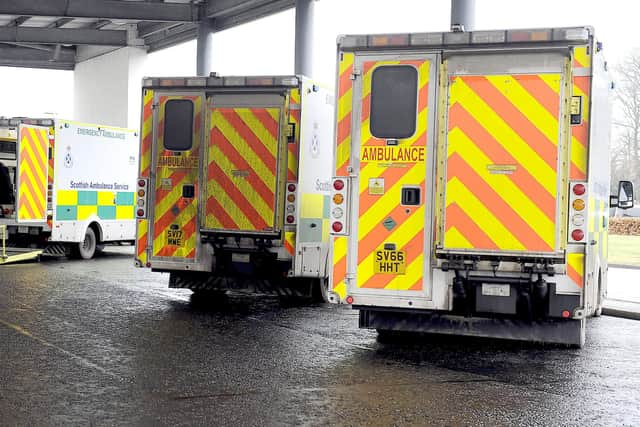A&E waiting times rise as NHS Fife urges people to look at all treatment options
and live on Freeview channel 276
The latest figures show that weekly waiting times reached their worst since May with 59.8% of patients seen within the target time of four hours - a sharp decline from 69.1% in the previous week.
But NHS Fife said there were many factors behind rising numbers going to the emergency department, and it recently launched an initiative help better inform patients of when they should access A&E and when there may be alternative options for care.
Advertisement
Hide AdAdvertisement
Hide AdConcerns over the latest waiting times came from the Lib Dems. Figures for the week ending December 10 showed that 550 patients waited longer than four hours in A&E, and that 37 waited for more than 12. NHS Fife was also below the Scottish average of 60.9% waiting beyond the target. The Scottish Government’s target is that 95% of patients are seen within four hours.


Willie Rennie, MSP for North-East Fife, said: “This sharp deterioration in waiting times is a cause for concern as the winter pressure on the NHS deepens. NHS staff are working flat out to give people the care they need but they simply don’t have the beds, safe staffing and resources they need.
“The ongoing crisis in healthcare makes clear that the Scottish Government’s NHS recovery plan has not worked. Instead of supporting services, NHS Fife has been left to deal with a widening deficit which has now stretched to almost £16 million. The Scottish Government needs to overhaul its plans and implement measures which will reduce burnout amongst staff who are being overworked and stretched thin.”
NHS Fif said figures fluctuated with seasonal factors including respiratory viruses in winter, or less predictable factors such as days with good weather where people are more likely to take part in activities.
Advertisement
Hide AdAdvertisement
Hide AdBelinda Morgan, general manager, emergency care, said: “Attending A&E or calling 999 is for emergencies only such as serious injury, suspected heart attack or stroke, breathing difficulties or severe bleeding. For those who think they may need emergency care, but it is not critical or life threatening – they should call NHS 24 on 111 to make sure they get the right care in the right place.
“Whilst most people are either referred to A&E or attend with an urgent medical need, there are still those who turn up who could be more appropriately treated elsewhere – often much quicker. Our minor injuries services, of which there are four spread across Fife, are staffed by highly qualified specialists who can treat serious but not life threatening illness or injury such as cuts and wounds, burns and scalds, and broken bones.
“NHS Fife has recently undertaken a project to help better inform patients of when they should access A&E and when there may be alternative options for care. The project includes improvements to signage on the way to A&E, and the creation of an online resource at www.nhsfife.org/emergency.”